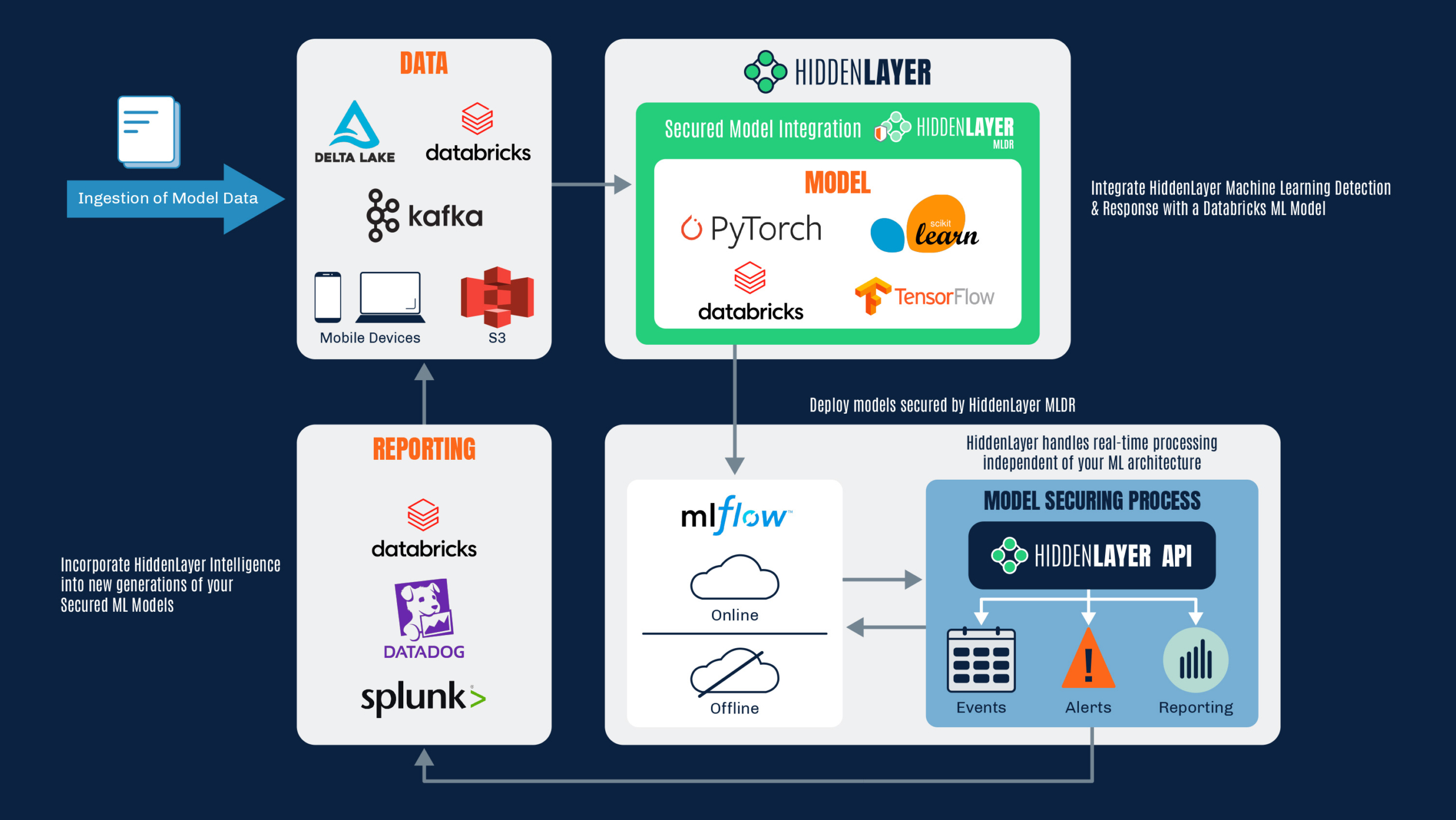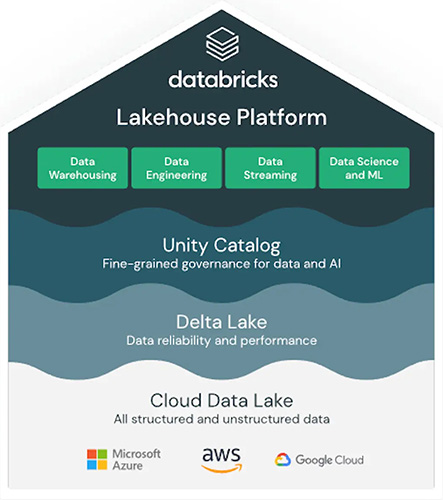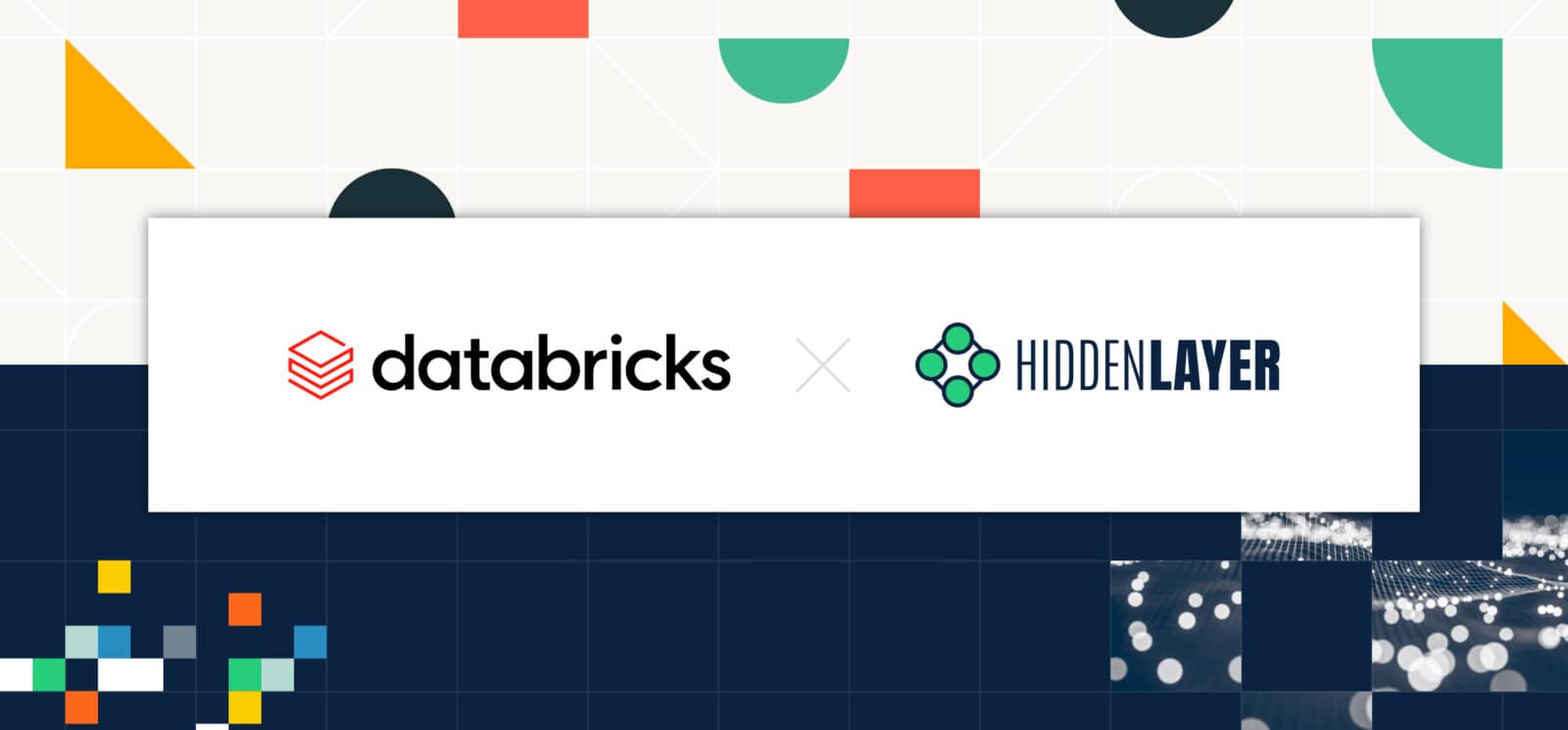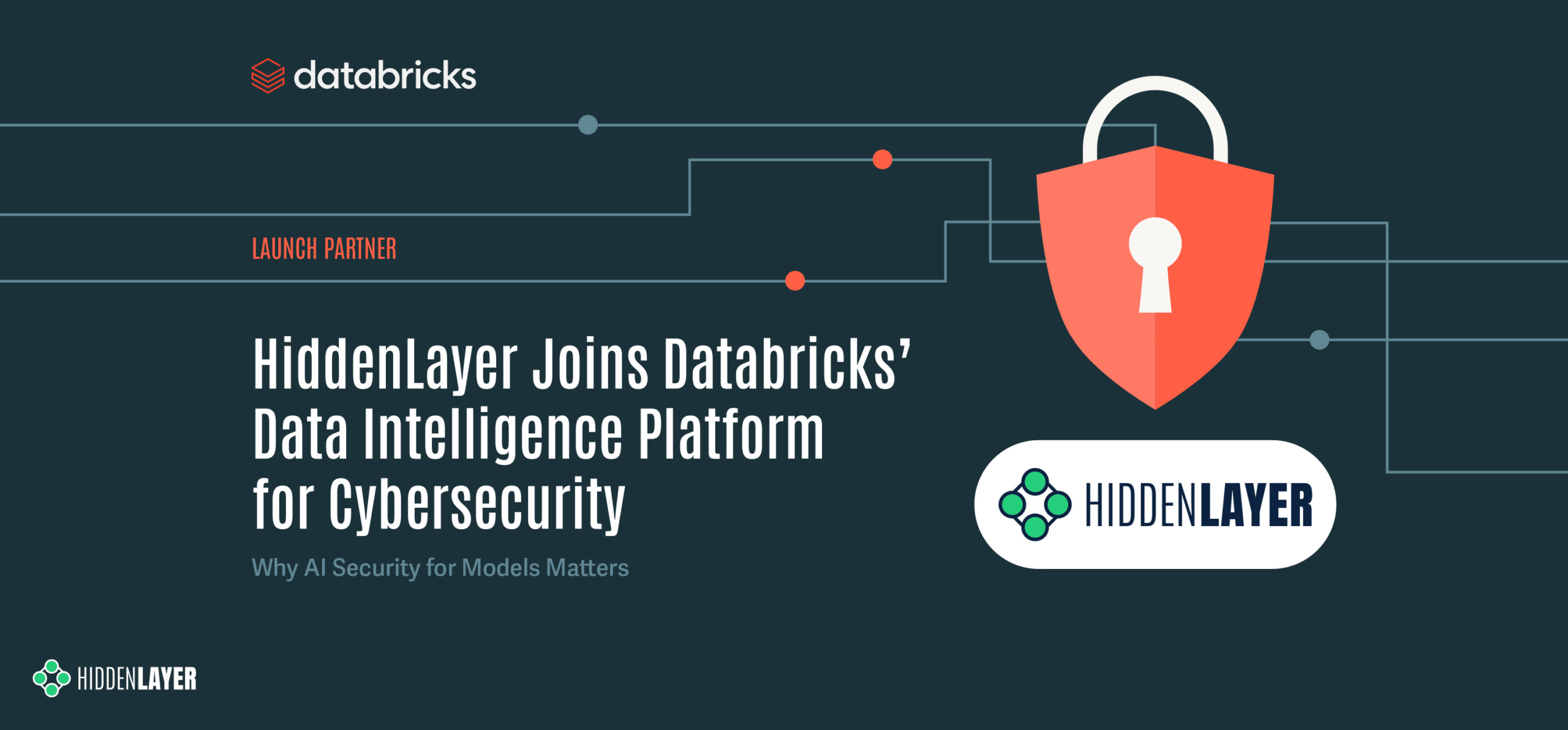Introduction
HiddenLayer is excited and proud to announce its strategic partnership with Databricks. HiddenLayer can now integrate with Databricks to increase the security of intellectual property through detecting and preventing adversarial machine learning attacks and scanning models for malicious code and vulnerabilities.
There is little doubt that Artificial Intelligence is here to stay, with AI making headlines all over the news and becoming a hot topic of discussion across the globe. According to Gartner, “AI will be a critical driver of the next wave of digital innovation, creating $3.9 trillion in business value and 6.2 billion hours of worker productivity globally by 2022.” Databricks is helping facilitate this meteoric rise of AI adoption as the creator of the lakehouse category and leader in the Machine Learning Operations (MLOps) market, while HiddenLayer is a pioneer in the research and defense of artificial intelligence application security.
Databricks Machine Learning, built on an open lakehouse architecture, is proven to empower ML teams to accelerate end-to-end ML. This new ability to integrate means the entire Databricks enabled MLOps lifecycle is now able to be secured right from your Databricks infrastructure – ensuring the most seamless, scalable and efficient Model security solution available on the market.
“Databricks + HiddenLayer is a powerful combination. Databricks has become an industry leader in ML Operations with MLflow and their model serving capability, helping data science teams design, develop, and deploy ML Models at a rapid pace. With HiddenLayer, companies can embed security throughout the entire ML Ops lifecycle from the cradle to the grave.” Howard Levenson, AI Industry Advisor.

Databricks & MLOps
Databricks and its Lakehouse Platform are used by data science teams worldwide for the following reasons:
- Collaboration: Databricks has a strong focus on collaboration and sharing, allowing multiple users to easily work on the same data and projects.
- Notebook environment: Databricks provides a notebook environment, similar to Jupyter Notebook, which allows data scientists to easily document their work, share their findings, and collaborate with others.
- Multi-language support: Databricks supports a wide range of programming languages, including Python, R, SQL, and Scala allowing data scientists to use their preferred language for data analysis and Machine Learning.
- Built-in libraries: Databricks provides built-in libraries for Machine Learning, such as TensorFlow, Keras, PyTorch, and scikit-learn, which makes it easy to perform advanced Machine Learning tasks.
- Data Management: Databricks Lakehouse platform provides a unified data management layer that allows users to easily access and analyze data from various sources, including structured and unstructured data, real-time streams, and data lakes. It also provides data catalog, data governance and data lineage features that allows for easy discovery, understanding and trust of the data.
- Advanced analytics: Databricks allows for easy integration with other open-source tools and libraries like DeltaLake, MLflow, and Koalas, which can help data science teams to perform advanced analytics such as time-series analysis, image recognition and natural language processing.

Security for Artificial Intelligence
With HiddenLayer’s partnership, Databricks can now add security and enhanced integrity to its long list of benefits provided to data science teams. Enterprise companies worldwide are rapidly incorporating artificial intelligence into their tech stack and introducing ML Models as a new cybersecurity attack surface which need to be monitored and protected.
Cyber Threat Actors are continuously evolving and devising new adversarial machine learning tactics and techniques. Given that many Machine Learning model inputs and predictions are publicly exposed, they are inherently vulnerable to these new attacks. According to Gartner, “Through 2022, 30% of all AI cyberattacks will leverage training-data poisoning, AI model theft, or adversarial samples to attack AI-powered systems.”
HiddenLayer’s MLSecPlatform and its flagship product HiddenLayer MLDR will protect your ML Models via the Databricks integration. HiddenLayer MLDR is a first of its kind cybersecurity solution that monitors, detects, and responds to Adversarial Machine Learning attacks targeted at ML Models. Our patent-pending technology provides a noninvasive, software-based platform that monitors the inputs and outputs of your Machine Learning algorithms for anomalous activity consistent with adversarial ML attack techniques. Response actions are immediate with a flexible response framework to protect your ML. Using HiddenLayer empowers your company to:
- Protect your intellectual property: Proprietary Machine learning models are the definition of critical intellectual property. If ML models are not secured, they may be used by unauthorized parties without permission, cloned, or stolen. Companies who proactively secure their ML models can safeguard their organization’s intellectual property from being compromised.
- Ensure data privacy: Machine Learning models are often trained on large amounts of data, which can include sensitive information. Left unsecured, this data may be accessed by unauthorized parties, leading to potential data breaches and regulatory violations.
- Maintain accuracy: Machine Learning models can be reverse engineered, poisoned, and altered, leading to decreased accuracy, efficacy, and trustworthiness.
- Preserve your competitive advantage: Machine Learning models give companies advantages over the competition. Left unsecured, others may be able to replicate your results and catch up to you. Securing your models helps ensure that you maintain your competitive advantage.

How HiddenLayer Integrates with Databricks
The HiddenLayer-Databricks integration wraps an ML model as it is registered (saved) in Databricks Lakehouse. The integration is model agnostic and includes model scanning and model detection and response. This enables Data Scientists and ML Engineers to add security to their models with no code or behavioral changes to their environment. As the model is loaded, it will be scanned by HiddenLayer’s model scanner to ensure integrity as well as security. If an attack is detected, the integration will handle the response accordingly without any human interaction needed. With the peace of mind of ML Models protected by HiddenLayer, Data Science teams can focus their attention on building their advantage without sacrificing integrity or security.
Conclusion
Incorporating security into machine learning operations is critical for data science teams. With the increasing use of machine learning models in sensitive areas such as healthcare, finance, and national security, it is essential to ensure that machine learning models are secure and protected against malicious attacks. By embedding security throughout the entire machine learning lifecycle, from data collection to deployment, companies can ensure that their models are reliable and trustworthy.
Databricks Lakehouse Platform enables data science teams to design, develop, and deploy their ML Models rapidly while HiddenLayer MLSec Platform provides comprehensive security to protect, preserve, detect, and respond to Adversarial Machine Learning attacks on those models. Together, the two solutions empower your company to rapidly and securely deliver on your mission to advance your Artificial Intelligence strategy.
To learn more or try HiddenLayer’s integration with Databricks, please contact [email protected].




